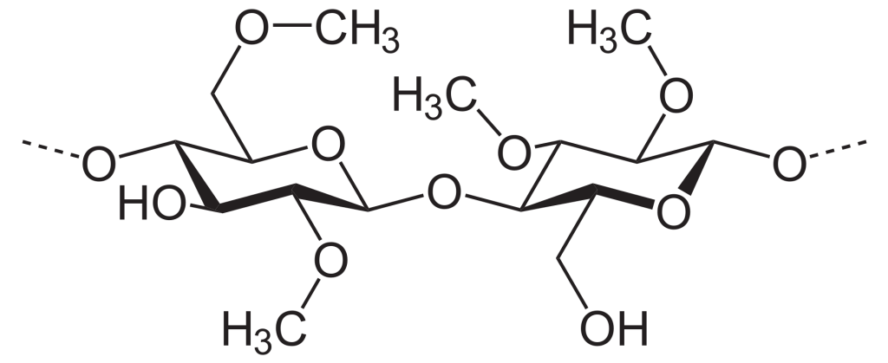A recipe I found involving the use of molecular gastronomy is maple flavored “hot ice cream” using methyl cellulose extracted from plant cellulose. Methyl cellulose is unique as its structure has both hydrophilic and hydrophobic regions. In warmer temperatures, the hydrophobic regions are more pronounced, and it gels up due to not bonding with water, while at cooler temperatures, the opposite happens and it takes a more liquid form. Due to this property, the “ice cream” melts as it cools and gels up when heated.
The ingredients for the recipe consist of plain yogurt, cream cheese, liquid flavoring (in this case, maple syrup), water, sugar, and methyl cellulose powder.
The first step is to whisk together 150g of plain yogurt, 115g of cream cheese and 50ml of maple syrup in a bowl. Then, mix 75ml of water with 20g of sugar into a saucepan and bring to a boil. Next, turn off the heat and whisk in 6g of methyl cellulose powder. Combine that with the yogurt mix and whisk for 1 minute, then transfer to another container and refrigerate for 2-3 hours. Once it has sufficiently cooled, scoop the ice cream mix into simmering water for 1-2 minutes, then scoop it out and serve.
This recipe is really interesting to me as it challenges what can be considered “ice cream”. Does it have to be cold? Does it have to be creamy? The ICE in ice cream suggests that it is a cold food, but this recipe throws that out the window, allowing people to enjoy ice cream in the winter.
Recipe sourced from 10 Easy Molecular Gastronomy Recipes – Paste Magazine
Methyl cellulose properties and featured image sourced from Hot Ice Cream Molecular Gastronomy Science Project (sciencenotes.org)

